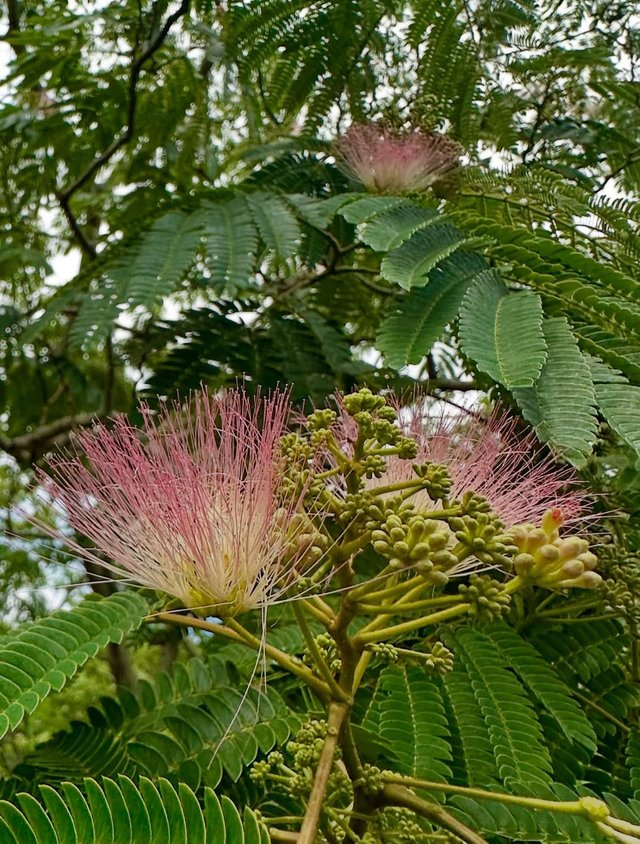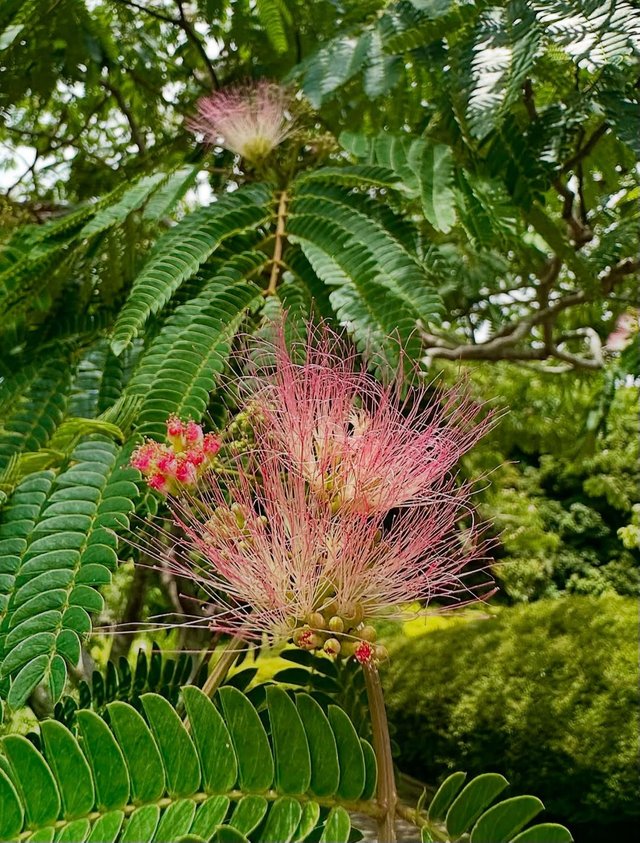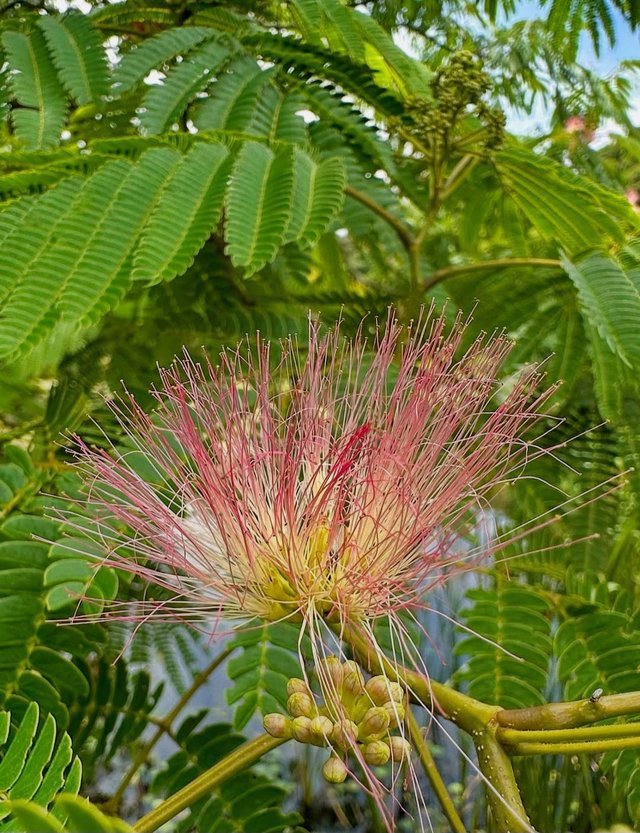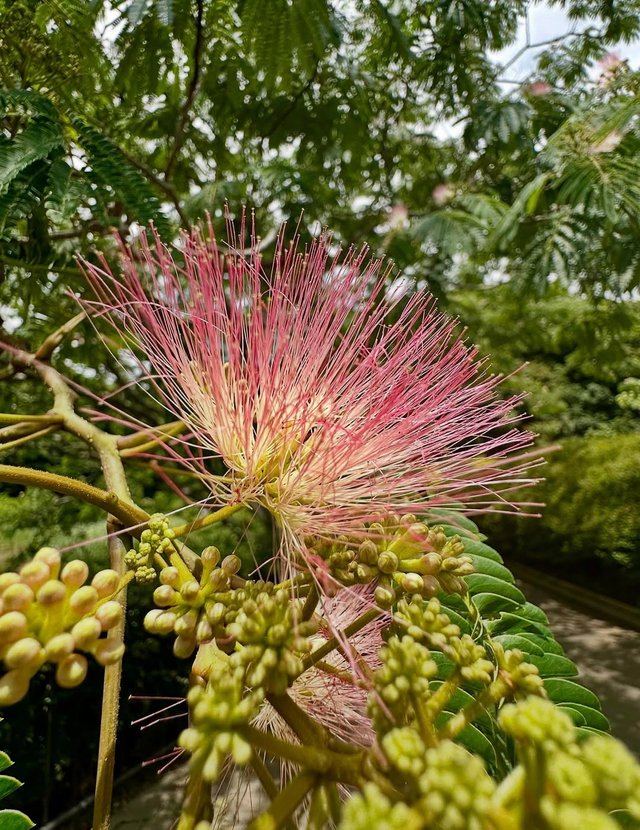Persian Silk Tree
The Persian silk tree, also known as Albizia julibrissin, silk tree, or mimosa tree, is a deciduous ornamental tree prized for its exotic, feathery blossoms and umbrella-shaped canopy. Native to Southwest and East Asia, particularly from Iran through China and Korea, this tree has captivated gardeners and botanists for centuries with its delicate charm, fast growth, and beneficial ecological traits.
The Persian silk tree features bipinnate compound leaves, which means each leaf is made up of many small leaflets arranged in a fine, feather-like fashion. These delicate, fern-like leaves fold up at night or when disturbed—a fascinating example of plant movement known as nyctinasty.Perhaps the most striking feature of this tree is its silky, pink powder-puff flowers, which bloom in summer.The flowers are composed of long, thread-like stamens that give them a fluffy appearance. Their subtle fragrance attracts bees, butterflies, and hummingbirds.
The bark is smooth and grayish, and the tree's horizontal branching structure creates a graceful, flat-topped canopy that provides dappled shade. This structure also makes it ideal for ornamental landscaping.The Persian silk tree grows quickly and prefers full sun and well-drained soil. It is relatively drought-tolerant once established and can adapt to a range of soil types, including poor or sandy soils.While the Persian silk tree is admired for its beauty, it is considered invasive in some regions, especially in parts of the southeastern United States. It produces numerous seed pods that germinate easily, and its suckering roots can spread aggressively. In areas where it naturalizes, it may outcompete native species.



